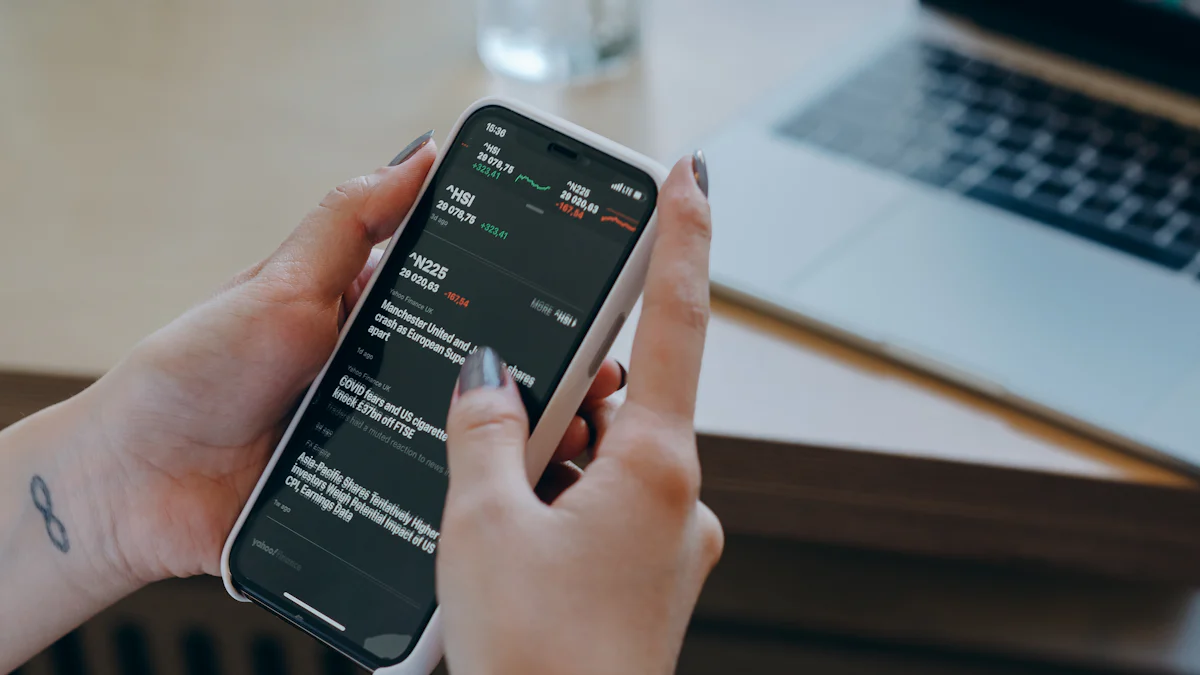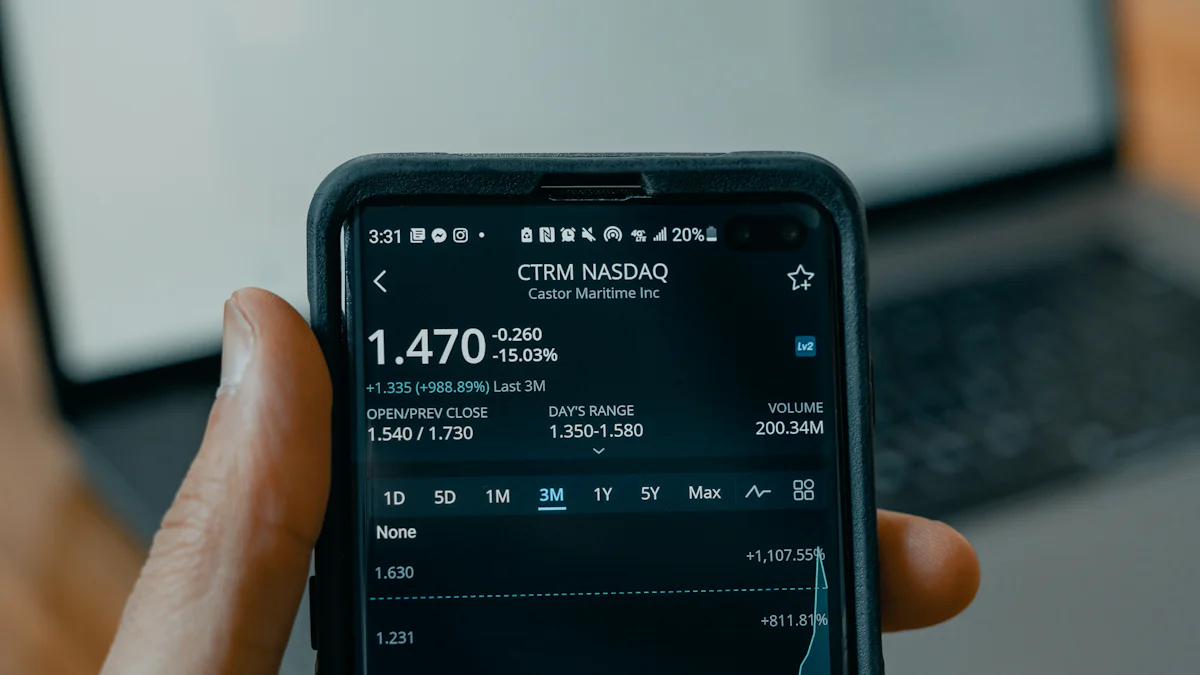


Cost Per Install (CPI) plays a crucial role in app marketing. You might wonder why CPI matters so much. Well, CPI helps you measure how much money you spend to get new users for your app. This metric ensures that your advertising dollars are used effectively. You can set a budget and only pay for installs within that limit. By understanding CPI, you can make informed decisions about your marketing strategies. You can also identify cost-effective channels for acquiring users.
Understanding Cost Per Install (CPI)

Definition of Cost Per Install
Cost Per Install, or CPI, stands as a vital metric in the world of app marketing. Advertisers use CPI to measure the cost associated with acquiring new users through app installations. This metric provides a clear picture of how much each app install costs. Businesses can evaluate the effectiveness of their marketing campaigns by focusing on CPI.
Explanation of how CPI is calculated
Calculating CPI involves a straightforward formula. You divide the total marketing spend by the number of app installs generated from that campaign. For example, if a campaign costs $1,000 and results in 500 installs, the CPI would be $2. This calculation helps marketers understand the financial efficiency of their campaigns.
Key components involved in CPI
Several components play a role in determining CPI. First, the total marketing spend includes all costs related to advertising efforts. Second, the number of app installs reflects the success of these efforts. Advertisers must also consider the quality of installs, distinguishing between paid and organic ones. High-quality installs often lead to better user engagement and retention.
The role of Cost Per Install in app marketing
CPI holds a significant position in app marketing strategies. Marketers rely on CPI to gauge the success of their campaigns and make informed decisions. By understanding CPI, advertisers can tailor their strategies to achieve better results.
How CPI influences marketing strategies
CPI directly influences marketing strategies by highlighting cost-effectiveness. Marketers can identify which channels provide the best returns on investment. A lower CPI indicates a more efficient campaign, prompting marketers to allocate resources to successful channels. This approach helps in optimizing user acquisition efforts.
The impact of CPI on budget allocation
Budget allocation becomes more precise with a focus on CPI. Advertisers set budgets based on expected CPI values, ensuring they do not overspend. By paying only for installs within a set budget, businesses maintain control over their advertising expenses. This method allows for strategic planning and resource management, leading to more successful marketing outcomes.
Comparing Cost Per Install with Other Metrics
CPI vs. Cost Per Click (CPC)
Differences in measurement and application
You might wonder how Cost Per Install (CPI) differs from Cost Per Click (CPC). CPI measures the price paid for every user who installs an app due to marketing efforts. In contrast, CPC focuses on the cost per user who clicks on an advertisement. Marketers use CPI to assess the effectiveness of campaigns in driving app installations. CPC, on the other hand, evaluates the ability of ads to attract clicks. These metrics serve different purposes in marketing strategies.
When to use CPI over CPC
Choosing between CPI and CPC depends on your goals. Use CPI when the primary aim is to increase app installs. This metric directly ties spending to user acquisition. Opt for CPC if the goal involves generating traffic to a website or landing page. CPC helps in understanding which ads draw the most attention. Each metric has its place in a well-rounded marketing strategy.
CPI vs. Cost Per Acquisition (CPA)
Understanding CPA in relation to CPI
Cost Per Acquisition (CPA) and CPI both measure costs associated with user actions. However, CPA covers a broader range of actions beyond app installations. CPA might include purchases, sign-ups, or other specific actions. CPI focuses solely on the cost of acquiring new app users. Understanding these differences helps in selecting the right metric for your campaign objectives.
Advantages and disadvantages of each metric
CPI offers a straightforward approach to measuring app installs. This metric provides clear insights into the cost-effectiveness of app marketing efforts. However, CPI may not capture the full value of user engagement beyond installation. CPA, while more comprehensive, can be complex to track and analyze. CPA requires defining specific actions and measuring their costs. Each metric has its strengths and limitations, so choose based on your marketing goals.
Practical Applications of Cost Per Install

Strategies to Optimize Cost Per Install
Optimizing your Cost Per Install (CPI) can significantly enhance the success of your app marketing campaigns. You can use several strategies to achieve this.
Techniques for Reducing CPI
- Automated Tools: Use automated tools to optimize bids, budgets, and targeting. These tools save time and improve CPI by reaching users more likely to install the app.
- Targeted Advertising: Focus on specific demographics or interests. This approach ensures that ads reach the right audience, reducing unnecessary spending.
- Creative Testing: Experiment with different ad creatives. Identify which visuals or messages resonate best with potential users.
- Channel Selection: Choose the right advertising channels. Some platforms may offer better CPI rates due to their user base.
- A/B Testing: Conduct A/B tests on various elements of your campaigns. This helps in identifying what works best for reducing CPI.
Examples of Successful CPI Optimization
- Company A used automated tools to refine its targeting strategy. The result was a 30% reduction in CPI within three months.
- Brand B focused on creative testing. By changing ad visuals, the brand saw a 20% increase in installs at a lower cost.
Case Studies
Real-world examples provide valuable insights into CPI optimization. Let's look at some successful applications.
Real-world Examples of CPI in Action
- App Developer X: This developer leveraged CPI marketing to reach new audiences. By focusing on high-quality users, the developer achieved a significant increase in app installs.
- Marketing Agency Y: The agency utilized CPI alongside other metrics. This approach made their campaigns more effective and budget-friendly.
Lessons Learned from These Case Studies
- Importance of Targeting: Effective targeting can drastically reduce CPI. Reaching the right users ensures higher engagement and retention.
- Role of Creativity: Creative elements play a crucial role in attracting users. Testing different creatives can lead to better results.
- Value of Automation: Automated tools streamline processes and improve efficiency. These tools help in maintaining a competitive edge in the market.
By applying these strategies and learning from real-world examples, you can optimize your CPI and enhance your app marketing efforts.
Cost Per Install (CPI) stands as a pivotal metric in app marketing. You can use CPI to gauge the effectiveness of your campaigns and make informed decisions. Optimizing CPI involves targeting the right audience, using compelling ad copy, and tracking installs. Automated tools can also streamline processes and improve results. By analyzing CPI trends, you can identify cost-effective acquisition channels and allocate budgets wisely. Focusing on high-quality campaigns and measuring user experience can further reduce CPI. Embrace these strategies to enhance your app marketing success.
FAQ
A good CPI varies by industry and target audience. For gaming apps, a CPI under $2 might be ideal. For niche apps, a higher CPI could still be cost-effective. Always consider the return on investment (ROI) when evaluating CPI.
Marketers set a target CPI based on budget and expected ROI. A higher target CPI often leads to increased ad spend. This results in a higher overall CPI. Setting realistic targets helps maintain budget control.
CPI fluctuates due to several factors. These include changes in ad competition, user behavior, and seasonal trends. Monitoring these factors helps in adjusting strategies accordingly.
CPI directly impacts app marketing success. A lower CPI indicates efficient spending on user acquisition. This efficiency leads to better budget management and improved campaign outcomes.
Yes, optimizing CPI is possible. Techniques like targeted advertising, creative testing, and automated tools help reduce CPI. Successful optimization enhances the effectiveness of marketing efforts.
CPI is crucial but not the only metric. Consider other metrics like Cost Per Acquisition (CPA) and Cost Per Click (CPC) for a comprehensive view. Each metric provides unique insights into different aspects of marketing performance.
Continue Reading About Cost Per Install
10 Game-Changing Project Management Reporting Types!
Unlock project success with 10 must-know reporting types! Track progress, manage risks, and stay on budget like a pro.
Lewis
Mar 03, 2025
10 Must-Have Marketing Agency Reporting Tools for Your Success
Optimize your agency's performance with top reporting tools. Explore analytics, social media, SEO, and more for data-driven decisions and efficiency.
Lewis
Oct 09, 2024
15 Best Software Reporting Tools for 2025
Explore the top 15 software reporting tools for 2025. Compare features, pricing, and usability to find the best fit for your business needs.
Lewis
Oct 08, 2024
2025 Best Data Integration Solutions and Selection Guide
Explore top data integration solutions for 2025, enhancing data management and operational efficiency with leading platforms like Fivetran and Talend.
Howard
Dec 19, 2024
2025's Best Data Validation Tools: Top 7 Picks
Explore the top 7 data validation tools of 2025, featuring key features, benefits, user experiences, and pricing to ensure accurate and reliable data.
Howard
Aug 09, 2024
2025 Data Pipeline Examples: Learn & Master with Ease!
Unlock 2025’s Data Pipeline Examples! Discover how they automate data flow, boost quality, and deliver real-time insights for smarter business decisions.
Howard
Feb 24, 2025


